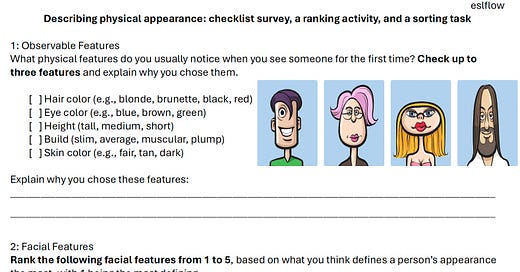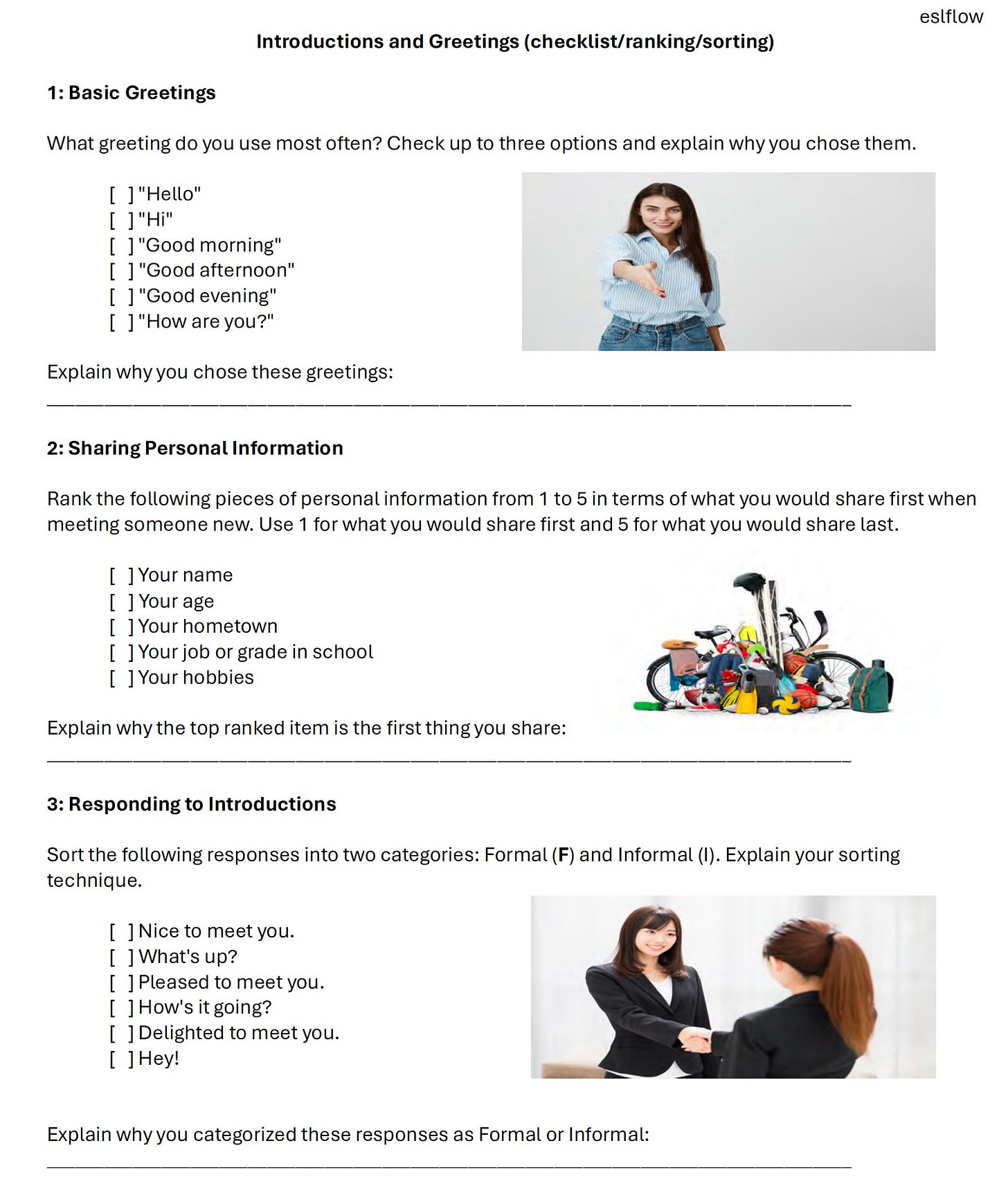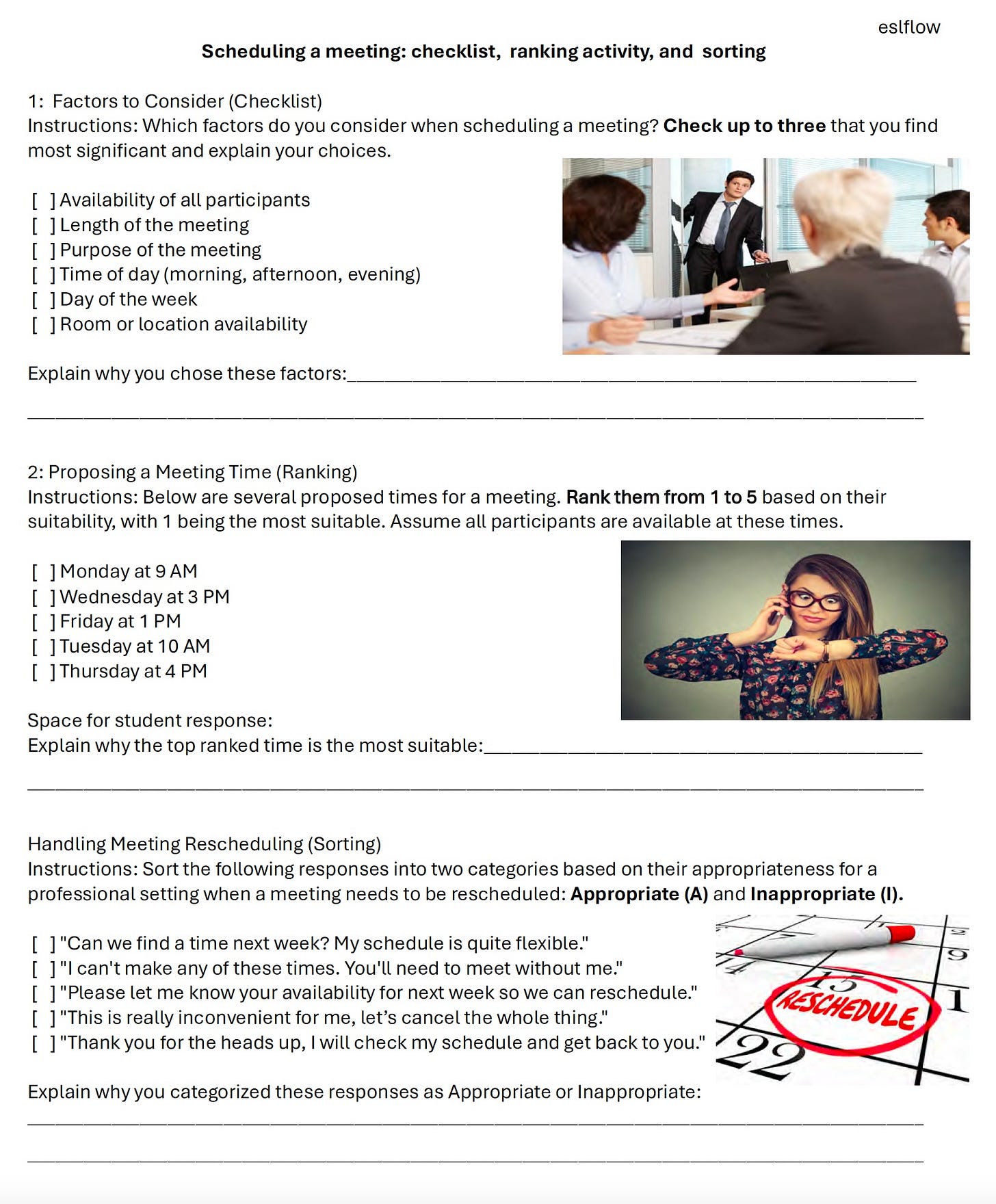Checklist, Ranking and Sorting: All In one GPT
Plus 15+ activities for various levels and topics
Checklist, ranking and sorting critical thinking GPT
This new OpenAI Generative Pre-trained Transformer (abbreviated to CRS GPT in this post) was designed (by me) to create a sequence of activities for language learners and teachers. The activities generated by the model include a checklist exercise, a ranking activity, and a sorting exercise. These three activities can be applied to just about any level or topic in language learning. The CRS GPT has been trained to generate this sequence of activities because they are flexible, engaging, and useful for introducing or reviewing a topic. To highlight the versatility of this CRS GPT model, today's post showcases its application to a range of common English as a Second Language (ESL) topics, including: communication skills; grammar exercises; Business English topics; and a few other contemporary and challenging subjects. Additionally, the model generates a set of possible answers for the teacher's reference. (Oh, I should note that I added the pictures myself!)
Note: The instructions and link to the GPT as well as the complete exercises wiht answers are in the paid subscriber section.
1. Communication skills
The CRS GPT is excellent for creating communication skills activities.
Example 1: Describing physical appearance:
The checklist survey prompts learners to identify and explain distinctive facial features, expanding their descriptive vocabulary.
The ranking activity encourages learners to consider the impact of different hairstyles on a person's appearance, promoting observation and description skills.
The sorting task helps learners categorize clothing styles based on the impressions they give, developing an understanding of cultural and social norms.
Example 2: Greetings and introductions
I tested the CRS GPT on “greetings and introductions.” Although this is one of the most elementary aspects of language learning, it can be quite tricky to teach due to cultural differences and the importance of context. The CRS GPT generated two exercises: one focusing on basic greetings and introductions, and another with a more intercultural touch. These exercises demonstrate the tool's ability to create targeted, engaging content that addresses the complexities of this fundamental language skill.
Here is a summary of the first exercise:
Basic Greetings (Checklist): Encourages self-reflection on personal language use and promotes the application of greetings in real-life situations.
Sharing Personal Information (Ranking): Promotes critical thinking about social norms and personal boundaries in introductions.
Responding to Introductions (Sorting): Helps learners distinguish between formal and informal language and understand the appropriateness of each response in various contexts.
2. Grammar exercises
These exercises generated by the CRS GPT prove especially useful for introducing, reviewing, or emphasizing critical thinking in grammar instruction. Once a format has been established for the GPT and examples have been provided as training data, customizing an exercise becomes straightforward. For instance, to create exercises focusing on the present perfect tense, I simply used the following instruction:
'Create present perfect tense exercises with the following parameters: checklist = correct vs incorrect, ranking = most recent to least recent, sorting = short timespan vs long timespan.'
3 Business English
The CRS GPT is excellent at creating engaging Business English activities as exemplified by the exercise below:
Scheduling a meeting (Business English):
The checklist activity encourages learners to consider important factors when scheduling a meeting, promoting critical thinking and decision-making skills.
The ranking activity helps learners prioritize and evaluate the suitability of different meeting times, a practical skill for business settings.
The sorting activity focuses on appropriate communication when rescheduling meetings, enhancing learners' professional language skills.
4 Contemporary topics
The CRS GPT is perhaps most powerful for creating engaging exercises on contemporary or trending topics. The adaptable CRS GPT format encourages critical thinking, decision-making, and analytical skills. By using CRS GPT generated exercises, you can confidently introduce new topics every week, saving time and effort in lesson planning while providing students with valuable learning opportunities.
Example 1
The CRS GPT "Digital Payments" exercise explores three key aspects of this rapidly evolving technology:
Types of Digital Payment Methods: Learners identify the digital payment methods they commonly use and explain their choices, reflecting on their personal payment habits.
Factors Influencing the Use of Digital Payments: Learners rank factors that influence their choice to use digital payments, promoting critical thinking about the advantages and considerations associated with these methods.
Security Measures in Digital Payments: Learners categorize security measures as either essential or nice-to-have, raising awareness about the importance of security in digital transactions.
Example 2 Renewable Energy
Example 3 Quantum Literacy







